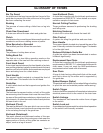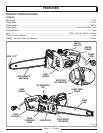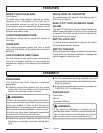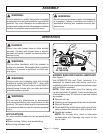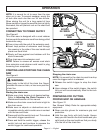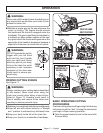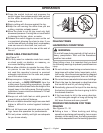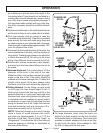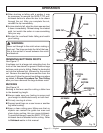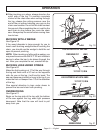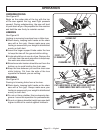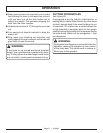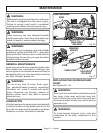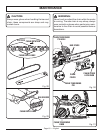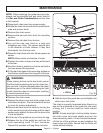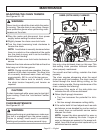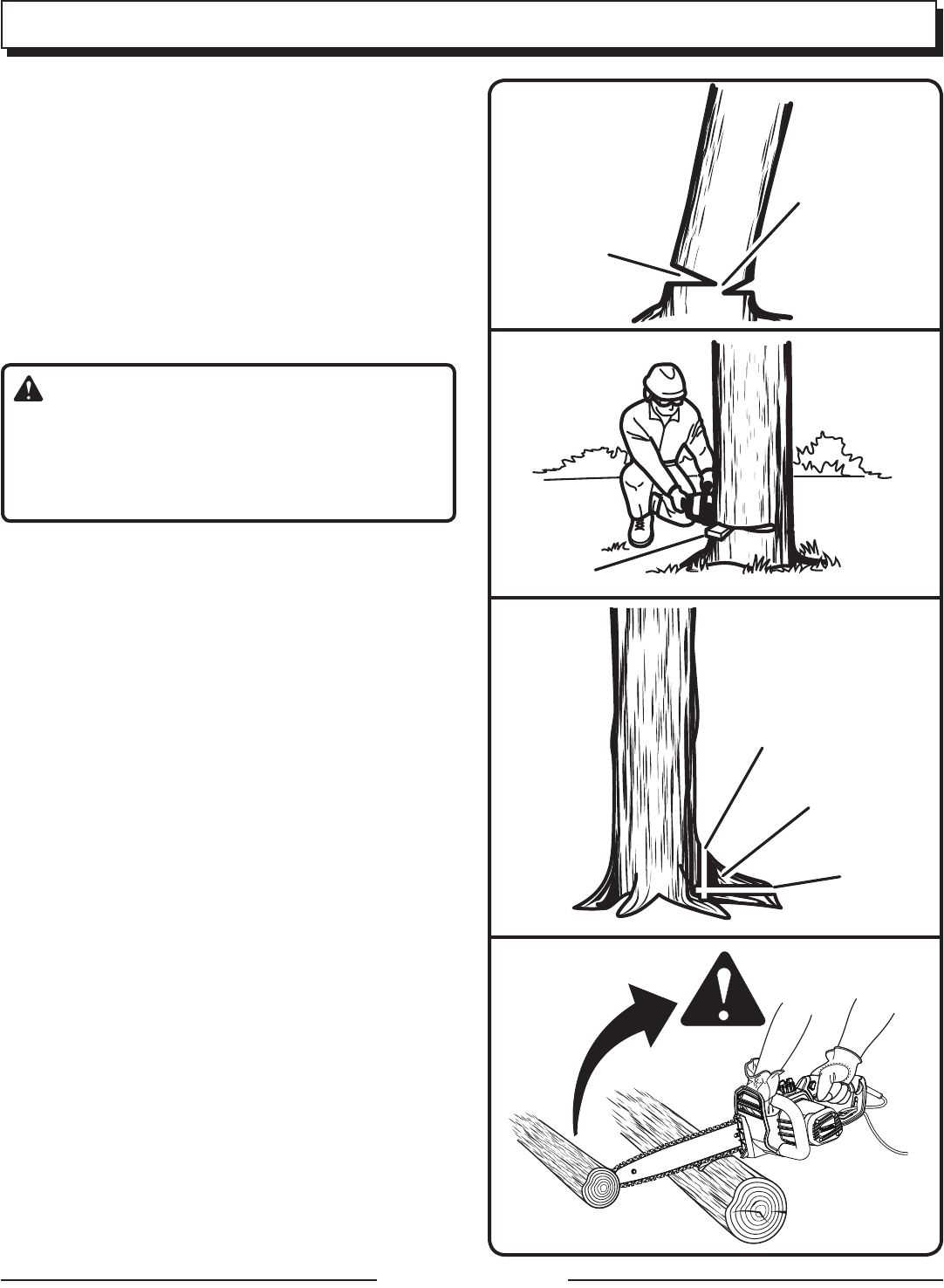
Page 18 — English
OPERATION
When bucking or felling with a wedge, it may
be necessary to remove the SAFE-T-TIP anti-
kickback device to allow the bar to be drawn
through the cut. After you complete the cut,
reinstall the tip immediately.
As tree starts to fall, stop the chain saw and put
it down immediately. Retreat along the cleared
path, but watch the action in case something
falls your way.
Be alert for overhead limbs falling and watch
your footing.
WARNING:
Never cut through to the notch when making a
back cut. The hinge controls the fall of the tree,
this is the section of wood between the notch
and backcut.
REMOVING BUTTRESS ROOTS
See Figure 17.
A buttress root is a large root extending from the
trunk of the tree above the ground. Remove large
buttress roots prior to felling. Make the horizontal
cut into the buttress first, followed by the vertical
cut. Remove the resulting loose section from the
work area. Follow the correct tree felling procedure
as stated in Proper Procedure For Tree Felling
after you have removed the large buttress roots.
BUCKING
See Figure 18.
Bucking is the term used for cutting a fallen tree
to the desired log length.
Always make sure your footing is secure and
your weight is distributed evenly on both feet.
Cut only one log at a time.
Support small logs on a saw horse or another
log while bucking.
Keep a clear cutting area. Make sure that no
objects can contact the guide bar nose and
chain during cutting, this can cause kickback.
To avoid the danger, keep the SAFE-T-TIP anti-
kickback device attached while cutting. Refer
to Kickback earlier in this manual.
WEDGE
Fig. 16
HORIZONTAL
CUT
VERTICAL
CUT
LOOSE
SECTION
Fig. 17
KICKBACK
Fig. 18
HINGE
BACK CUT
Fig. 15



